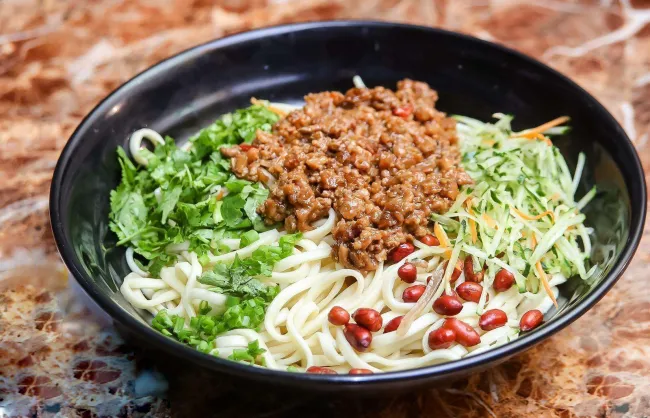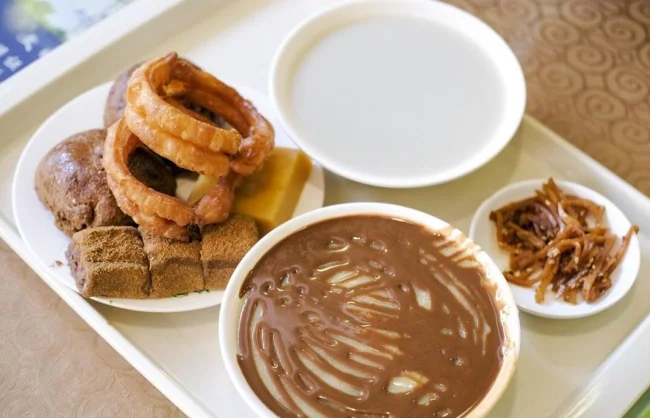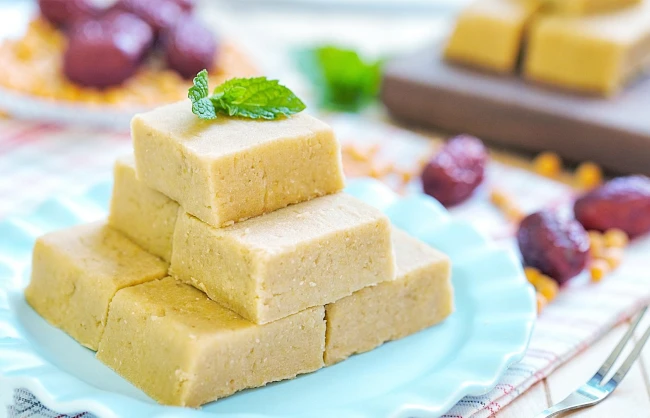Beijing is not only a political and cultural center of China but also a paradise for foodies. As representative of local flavors, Beijing food has also been mixed with specialties in other areas, forming a Beijing cuisine with unique characteristics. Influenced greatly by history, Beijing treats visitors to a wide range of delicious food, from imperial banquets to street food. No matter whether in a fine restaurant or a food stand on the street, you can find your own dishes.
Beijing Food Culture: The Essence of Beijing Cuisine
Beijing boasts a diverse culinary culture, among which the royal culinary culture is the most representative one. It emphasizes not only good flavor but also a beautiful presentation, like the Manchu-Han Imperial Feast in the Qing Dynasty, showing the high level of skill in Chinese culinary arts. Besides, folk Chinese food in Beijing also holds a place, which is home-cooked by ordinary people.
Beijing also bears an integration of food cultures as it invites people from all over the country who come to work, live, and travel, bringing their local flavors with them. From Inner Mongolian roasted lamb to Xinjiang naan, from Sichuan spicy hotpot to Shandong cuisine, regional flavors have all found their place in Beijing.
Top 10 Must-Try Chinese Food in Beijing
To truly experience Beijing’s food culture, here are the top 10 dishes you must try on your Beijing tours.
1. Peking Duck
As a symbol of Beijing cuisine, Peking Duck is a world-famous Chinese food in Beijing. Originating from the Northern and Southern Dynasties, it has been renovated to serve people nowadays. With crisp skin and tender meat, the Peking Duck is often served with cucumber, spring onion, and sweet bean sauce, with pancakes rolled around the fillings. By the way, this Beijing food is usually sliced in front of guests by the cook to keep its original flavor.
Recommended Restaurants: Quanjude, Bianyifang, and Dadong

2. Shuan Yangrou (Instant-Boiled Mutton)
Also named “instant-boiled mutton”, Shuan Yangrou is a type of mutton hotpot boasting a long history that can be dated back to the Yuan Dynasty. It is a very popular food in Beijing, China, especially in cold weather, as it is easy to cook, tastes great, and makes people feel warm. Traditionally, to make this Beijing food, thinly sliced mutton is quickly cooked in a boiling broth in a bronze pot and then dipped in a flavorful sesame sauce.
Recommended Restaurants: Dong Lai Shun, Nanmen Hot Pot, and Ju Bao Yuan
3. Zhajiangmian (Fried Sauce Noodles)
Being a traditional Chinese food in Beijing, Zhajiangmian is recognized as one of the 10 best noodles in China. It features hand-pulled noodles topped with a savory sauce made from fermented soybean paste and minced pork. Also, vegetables like cucumbers and radishes will be added to make it palatable. Old Beijing has a particular way of eating this Beijing food, that is, eating rinsed noodles on hot days and hot noodles without rinsing on cold days.
Recommended Restaurants: Da Wan Ju, Fangzhuanchang, and Guo’ertiao Noodles

4. Lu Zhu Huo Shao (Pork Stew with Bread)
When considering what to eat in Beijing, Lu Zhu Huo Shao should have its place. Originating in Nanheng Street in southern Beijing, this Chinese food is popular among locals and has a special way of cooking. It is made by putting the baked wheat bread and pork giblets together and stewing them in a broth, with tofu, coriander, and garlic sauce added to it to make it taste great. By the way, this Chinese food in Beijing can be found in small restaurants in Beijing hutongs.
Recommended Restaurants: Beixinqiao Lu Zhu Restaurant, Chenji Lu Zhu Xiao Chang, and Menkuang Hutong Bainian Lu Zhu
5. Douzhi (Fermented Mung Bean Milk)
Used to be a royal beverage during the reign of Emperor Qianlong in the Qing Dynasty, Douzhi is made from fermented mung beans and tastes sour and slightly bitter. It is often served with Jiaoquan and pickles, making it a popular breakfast for Beijingers. Besides, this Chinese food in Beijing has the function of clearing heat, so never miss it on your China food tours in Beijing.
Recommended Restaurants: Old Ciqikou Douzhi, Yinsan Douzhi, and Dongzhimen Douzhi Restaurant
6. Jiao Quan (Fried Dough Rings)
Jiao Quan is a traditional snack and food for breakfast in Beijing with a history of over 1,000 years. Made by frying flour dough to golden and crispy, this authentic Beijing food is round-shaped like a bracelet, that’s why it got the name. Beijingers love Jiao Quan very much, and they eat it when sampling baked pancakes or drinking Douzhi.
Recommended Restaurants: Huguo Temple Snack Bar, Yinsan Douzhi, and Chatang Lee Jingwei Restaurant

7. Lǘdagun (Rolling Donkey)
Also named “Rolling Donkey”, Lǘdagun is a popular Beijing food suitable for people of all ages. It’s not easy to make a Lǘdagun, and three procedures are required, including pre-forming, stuffing, and forming. For the last procedure, soybean flouring is like a donkey rolling on the ground, hence the name. This Chinese food in Beijing tastes sweet and has a soft, chewy texture.
Recommended Restaurants: Laohuihui Restaurant, Bai Ji Nian Gao, and Huguo Temple Snack Bar
8. Zha Guan Chang (Fried Sausage)
Zha Guan Chang is a beloved Beijing snack and one of the best food in Beijing served in many old restaurants. The making of the guan chang, a kind of sausage, is particularly complex, so people tend to buy the guan chang in a market, slice it, and fry it to a perfect condition with crispy skin and tender inside. Typically, this Beijing food is served with a dipping sauce made from garlic, vinegar, and soy sauce.
Recommended Restaurants: Fengnian Guanchang, Tianqiao Guoji Guanchang, and Huashi Daye Guanchang
9. Wandouhuang (Sweet Pea Pudding)
Wandouhuang is a popular dessert in Beijing, and it has a long history that can be traced back to the Han Dynasty. Used to be a folk snack since the Han Dynasty of ancient China, this Chinese food in Beijing was introduced to the royal families in the Qing Dynasty when Empress Dowager Cixi tried it by accident and thought highly of it. Made from yellow pea flour and sugar, this food of Beijing is a seasonal staple mainly served in spring.
Recommended Restaurants: Fangshan Tea House, Laohuihui Restaurant, and Manhengji

10. Baodu (Quick-Fried Tripe)
First recorded in the Qianlong era of the Qing Dynasty, Baodu is a must-try Chinese food in Beijing. Known for its tender texture and crispy flavor, Baodu is eaten with sesame paste, vinegar, chili oil, fermented tofu sauce, chopped cilantro, and chopped scallions. Besides, making this Beijing food involves cleaning and preparing fresh beef tripe (referring to beef omasum and tripe collar) or fresh lamb tripe, cutting it into strips or pieces, and then quickly boiling it in hot water.
Recommended Restaurants: Baodu Feng, Baodu Man, and Baodu Shi
Recommended China Food Tours including Beijing
- 13-Day China Package Tour – Food and Fun!
- 13 Days China Food Tour: Beijing Xi‘an Chengdu Guilin Hong Kong
Explore Beijing’s Commercial Food Markets
Beijing food streets are lined with restaurants and food stalls where you can try many delicious foods. Below are the most famous food streets and markets in Beijing.
1. Nanluoguxiang
As a landmark of Beijing, Nanluoguxiang is a famous hutong where you can not only discover the ancient architecture of Old Beijing but also taste the popular Chinese food in Beijing. It houses many restaurants, modern cafes, and food stalls serving various foods such as yogurt, Lu Zhu Huo Shao, Baodu, and more. Never miss the Beijing street food in Nanluoguxiang on your Beijing hutong food tour.
If you are interested in Beijing cuisine and want to make a dish by yourself, you can take our 3-hour Cooking Class Tour in Beijing Hutong.
2. Wangfujing Snack Street
Located in the east of the Palace Museum, Wangfujing Snack Street is one of the most famous commercial food streets in Beijing, and it treats travelers with almost all the traditional Beijing food as well as cuisines from all over the country. By the way, it is a combination of ancient architecture and the citizen culture of ancient Beijing, so you can eat there like a local in Beijing.
3. Niujie Street
Being the largest Hui Muslim community in Beijing, Niujie Street is a sacred street that mainly serves halal food in Beijing. It is packed with a variety of halal restaurants and snack shops that offer Beijing lamb skewers, lamb spine hotpot, beef pancakes, and many other foods. The famous Beijing restaurants Jubaoyuan Hot Pot Restaurant and Bai Ji are there.
4. Huguosi Snack Street
This street offers the most authentic hutong food in Beijing. There are many old shops operated for nearly a hundred years. Don’t hesitate to try the local food there, including Douzhi, Baodu, and Jing Ba Jian (an assorted dessert in Beijing.) Apart from its delicious Chinese food in Beijing, this street is also great for photography, especially for its ancient architecture and red lanterns.
5. Qianmen Street
Located in the south of Tiananmen Square, it’s a gathering place for old restaurants in Beijing and a must-go street for Beijing foodies. The famous Quanjude for Peking Duck, Daoxiangcun for Chinese traditional desserts, and Fangzhuangchang for Zhajiangmian can be found there. Besides, it is a wonderful place for touring the old shops and viewing the beautiful skyline of ancient Beijing.









